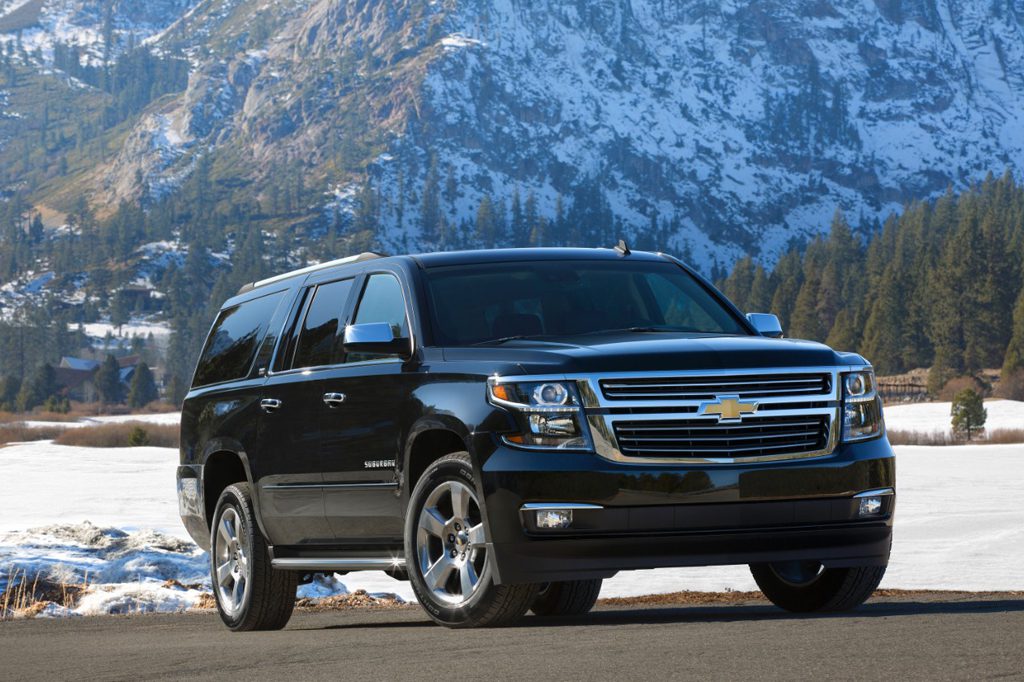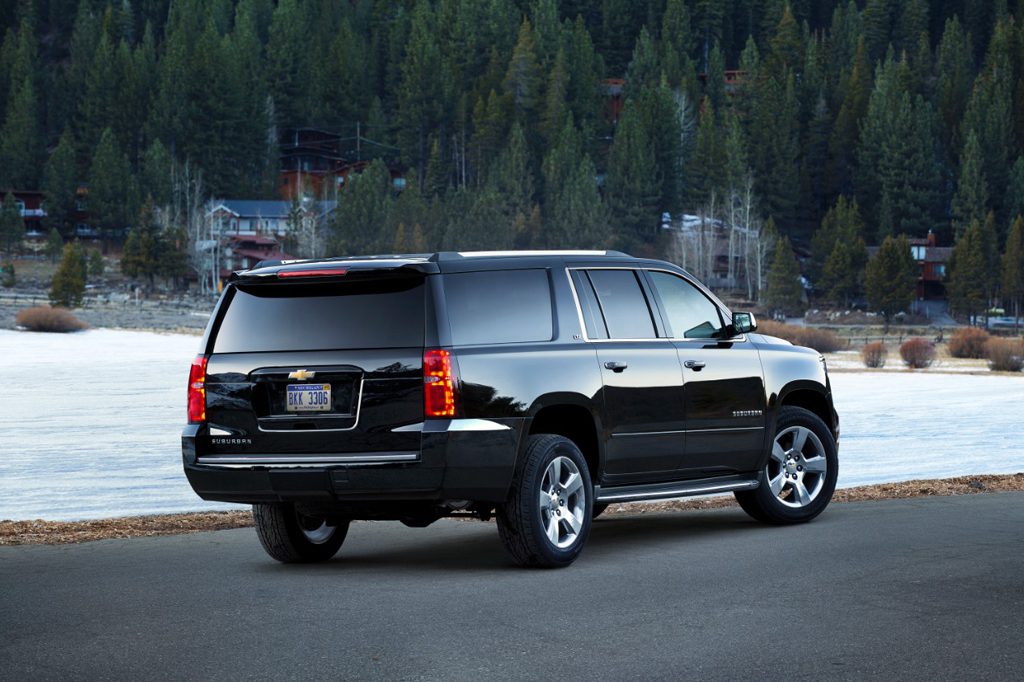| Large SUV; Built in USA |
|
|
| Good condition price range: $37,900 – $54,800* |

2015 Chevrolet Suburban

2015 Chevrolet Suburban

2015 Chevrolet Suburban
| Pros: |
|
| Cons: |
|
With many midsize crossovers combining sizable space and 3-row seating with less bulk and better V6 economy, it would seem as though the market – and argument – for these traditional full-size SUVs would be on the decline. But with their recent updates, Suburbans combine the room and comfort of a luxury car with unmatched cargo space and towing capacity, making them a thoroughly justifiable entity in our broad automotive landscape.
Overview
The Chevrolet Suburban was redesigned for 2015, gaining new styling, more horsepower, and a host of new safety and technology features. The Suburban shared its basic design with the Chevrolet Tahoe, but it is 14 inches longer than the Tahoe in wheelbase and 20 inches longer overall. The extended length gives the Suburban notably better rear cargo room and 3rd-row seat space than its Tahoe sibling. GMC sold versions of the Tahoe and Suburban named Yukon and Yukon XL, respectively. The new Suburban’s body was a bit longer, lower, and wider than the previous-generation model—passenger room was increased, but cargo room was down slightly. The 3rd-row seatbacks folded flat into the floor. Designers raised the cargo floor to accomplish this, which made for a higher liftover, but also allowed for some handy under-floor storage bins. The new engine was a 5.3-liter V8 with 355 horsepower—35 more than the previous engine—and its EPA ratings were 10 percent better. New safety features included forward collision alert, lane-departure warning, and rear cross-traffic alert. Some of the new safety features used GM’s Safety Alert Seat, which vibrated to warn the driver of potential obstructions. Interior materials were much improved over the outgoing Suburban, especially on higher-end models. Enhancing the upscale feel were new available features such as adaptive cruise control, a power-folding 3rd-row seat, and keyless entry and starting. The very notion of a hulking, V8-powered full-size SUV seems anachronistic to many shoppers these days, but for those who need the power, interior room, and towing capacity that only a large SUV offers, the all-new Suburban is an excellent choice.
Yearly Updates
| 2016 Suburban Chevrolet Suburban got only equipment upgrades for 2016. All Suburbans had an 8-inch touch screen and its MyLink infotainment system was Apple CarPlay compatible. An optional safety package newly included lane-departure mitigation and self-dimming headlights. A head-up display was available for LTZ. |
| 2017 Suburban Chevrolet Suburban gained a standard teen-driver monitor and low-speed automatic braking was available. The LTZ trim level was renamed Premier and gained standard heated/ventilated front seats. |
| 2018 Suburban Chevrolet Suburban gained an RST Edition package for LT and Premier models that included 22-inch wheels and unique trim. LED daytime running lights were standard on all models. |
| 2019 Suburban Chevrolet Suburban gained an optional 420-horsepower 6.2-liter V8 with 10-speed automatic transmission. There was also a Premier Plus Edition package that included the 6.2-liter V8, along with retractable side steps, 22-inch polished alloy wheels, and other luxury features. |
| 2020 Suburban The Chevrolet Suburban was unchanged for 2020 in anticipation of the redesigned 2021 model. |
